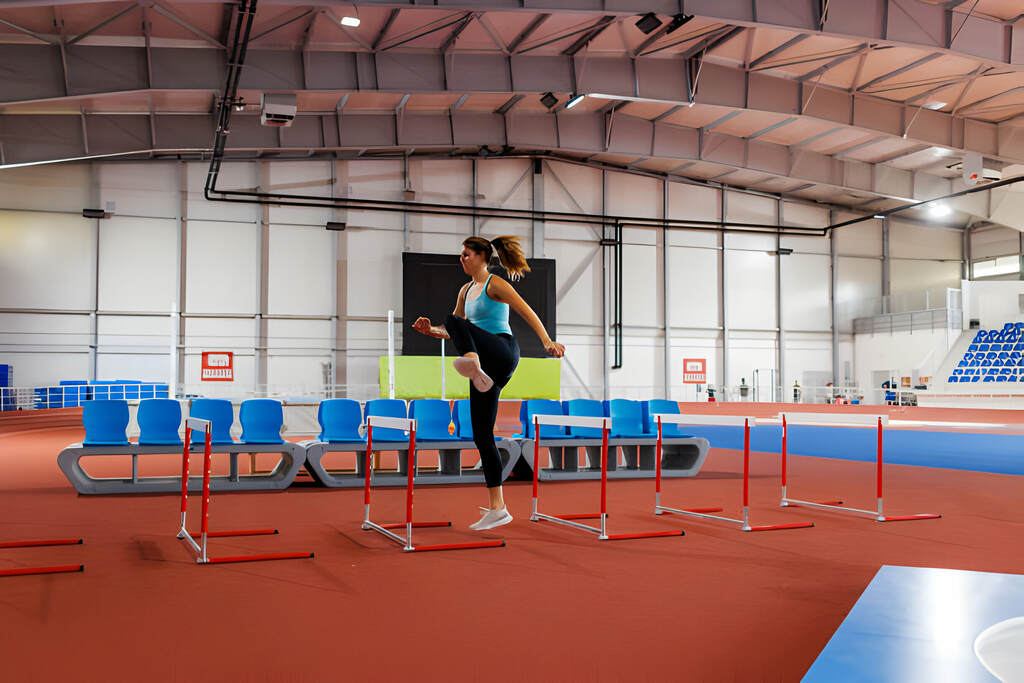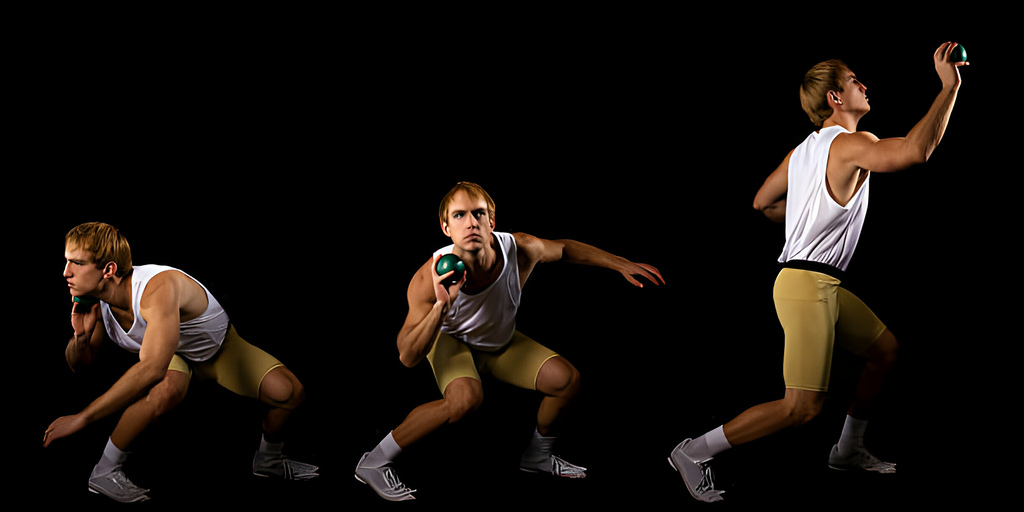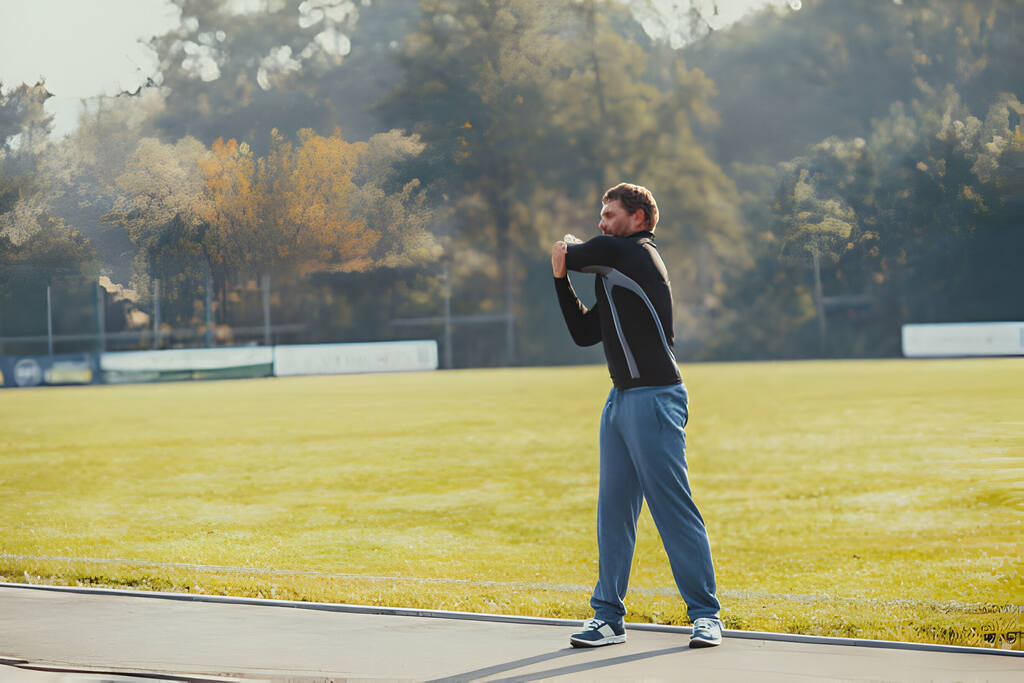Throwing sports demands a delicate balance between strength, power, and precision, placing unique stresses on an athlete’s body. Maximizing the health and performance of throwers requires a strategic approach to strength training.
In this article, we will delve into how strategic strength training can not only enhance performance but also contribute to the overall health and well-being of throwers.
Understanding the Interplay of Health and Performance
Throwing sports, such as baseball, softball, javelin, and discus, demand a delicate balance between performance optimization and the preservation of athletes’ health.
The repetitive and high-impact nature of these activities necessitates a strategic approach to training—one that not only enhances performance but also ensures the long-term well-being of throwers.
1. Holistic Approach to Throwers’ Well-being
Throwers, engaged in sports like baseball, softball, javelin, and discus, often face the risk of overuse injuries and strain due to the repetitive nature of their activities. A strategic strength training program goes beyond merely boosting performance; it becomes a cornerstone of throwers’ overall health.
2. Preventing Injuries for Long-Term Health
One of the primary benefits of strategic strength training is its role in injury prevention. Targeted exercises not only enhance strength and power but also address muscle imbalances and weaknesses, reducing the likelihood of overuse injuries that can plague throwers throughout their careers.
The Role of Strength Training in Enhancing Health and Performance
Throwing sports, such as baseball, softball, javelin, and discus, demand a unique blend of strength, power, and precision.
Strength training for throwers plays a pivotal role in enhancing performance by targeting specific muscle groups, improving biomechanics, and preventing injuries. In this section, we will explore the multifaceted role of strength training in the context of throwers’ performance.

1. Muscle Groups Targeted for Health and Performance
A strategic approach to strength training addresses not only performance enhancement but also the overall health and resilience of throwers. In this section, we will delve into the key muscle groups targeted for both health and performance in throwing sports.
a. Lower Body Strength for Joint Health
Strengthening the muscles in the hips, glutes, and thighs not only enhances the power needed for throws but also promotes joint health. A robust lower body contributes to stability and reduces the impact on joints during explosive movements.
b. Core Stability for Injury Prevention
The core serves as a crucial stabilizer, preventing excessive stress on the spine and improving overall posture. Core-strengthening exercises are vital for injury prevention and maintaining the health of the lower back.
c. Upper Body Strength for Shoulder Health
While building upper body strength is essential for powerful throws, it also plays a critical role in shoulder health. Targeted exercises for the rotator cuff and surrounding muscles help prevent common shoulder injuries prevalent among throwers.
2. Periodization for Long-Term Health and Performance
Effective strength training for throwers requires a well-structured periodization plan. Dividing the training year into specific phases allows athletes to target different aspects of strength, power, and endurance. The key phases include:
a. Off-Season Strength Building for Resilience
The off-season is an opportunity to build a resilient foundation. By focusing on overall strengths and addressing weaknesses, throwers set the stage for a healthier and more robust season.
b. Pre-Season Power Development for Performance Gains
As the season approaches, the focus shifts to converting strength into power. This phase not only enhances performance but also prepares the body for the specific demands of throwing sports.
c. In-Season Maintenance for Sustained Health
In-season training is not just about maintaining performance; it’s about sustaining health. Managing fatigue and avoiding overtraining are essential for the longevity of an athlete’s career.
Key Strength Training Exercises for Throwers
Throwers, engaged in sports like baseball, softball, javelin, and discus, require a specialized strength training regimen to enhance their unique skill set. In this section, we will explore the key strength training exercises essential for throwers.

1. Lower Body Exercises
Strong and explosive lower limbs are essential for generating the force needed to execute precise and powerful throws.
a. Squats
Squats are a foundational lower body exercise that targets the quadriceps, hamstrings, and glutes. Variations like front squats and back squats can be incorporated to emphasize different muscle groups.
b. Deadlifts
Deadlifts strengthen the posterior chain, including the hamstrings, glutes, and lower back. This exercise enhances overall hip extension and contributes to explosive lower body power.
c. Lunges
Lunges are effective for unilateral leg strength, helping to address any imbalances and improving stability during dynamic movements.
2. Core Strengthening Exercises
Core strength is a foundational element for athletes engaged in activities like baseball, softball, javelin, and discus.
a. Medicine Ball Rotational Throws
This exercise mimics the rotational movement of throwing and engages the core muscles. It enhances power transfer from the lower body to the upper body.
b. Planks
Planks target the entire core, including the rectus abdominis, obliques, and transverse abdominis. A strong core is essential for stability during the various phases of throwing.
c. Russian Twists
Russian twists focus on the rotational aspect of the core, promoting flexibility and strength in the oblique muscles.
3. Upper Body Exercises
An effective upper body strength training program is essential for enhancing performance and preventing injuries in sports like baseball, softball, javelin, and discus.
a. Shoulder Press
Strengthening the shoulder muscles is crucial for throwers. Shoulder presses, both seated and standing, target the deltoids and contribute to the power needed for overhead throws.
b. Lat Pulldowns
Lat pulldowns work on the upper back and latissimus dorsi muscles, contributing to the overall strength and stability of the shoulder girdle.
c. Rotator Cuff Exercises
Specific exercises targeting the rotator cuff, such as external and internal rotations, help prevent injuries and improve the integrity of the shoulder joint.
Injury Prevention and Longevity Through Strength Training
In the world of throwing sports, injury prevention and the promotion of longevity are paramount concerns for athletes and coaches alike. The repetitive, high-impact nature of activities like baseball, softball, javelin, and discus makes athletes susceptible to overuse injuries and muscular imbalances.
Strategic strength training serves as a powerful tool in mitigating these risks, promoting resilience, and ensuring the longevity of an athlete’s career.

1. Biomechanics and Technique Enhancement
Throwing sports demands a complex interplay of biomechanics and technique. The efficiency of movement and the precision of execution directly impacts the success of throws in disciplines such as baseball, softball, javelin, and discus.
In this section, we will explore the critical role of biomechanics and techniques in throwing sports and how strength training can be tailored to enhance these aspects.
a. Integrated Approach for Optimal Biomechanics
Strength training should complement proper biomechanics and technique. Coaches and athletes working collaboratively can identify and address any inefficiencies, ensuring that strength gains contribute to optimal throwing mechanics.
2. Rehabilitation and Prehabilitation for Continuous Health
Rehabilitation and prehabilitation are two crucial components of a comprehensive injury prevention and recovery strategy.
a. Eccentric Training for Injury Recovery
For athletes recovering from injuries, strength training, particularly eccentric exercises, can play a crucial role in rehabilitation. Controlled lengthening of muscles aids in the recovery of common throwing-related injuries.
b. Prehabilitation for Injury Prevention
Incorporating prehabilitation exercises, such as stability drills and resistance band work, into training routines becomes a proactive measure for injury prevention. By addressing potential issues before they escalate, throwers can maintain their health and longevity in the sport.
3. Load Management
Load management is a critical component of strength training for throwers, playing a pivotal role in optimizing performance while minimizing the risk of overuse injuries.
a. Monitoring Training Volume
Throwers should carefully monitor their training volume, especially during high-intensity phases. Sudden increases in throwing volume or heavy training loads can contribute to overuse injuries.
b. Periodic Rest and Recovery
Incorporating rest days into the training regimen is essential for recovery. Periodic breaks from high-intensity throwing and strength training allow the body to heal and adapt to the stresses imposed on it.
Conclusion
Maximizing throwers’ health and performance through strategic strength training involves more than just increasing numbers in the weight room. It requires a holistic approach that considers the unique demands of throwing sports, addresses potential areas of vulnerability, and prioritizes long-term well-being.
Coaches, athletes, and sports science professionals working collaboratively can create strength training protocols that not only optimize performance but also contribute to the sustained health and success of throwers throughout their careers.




